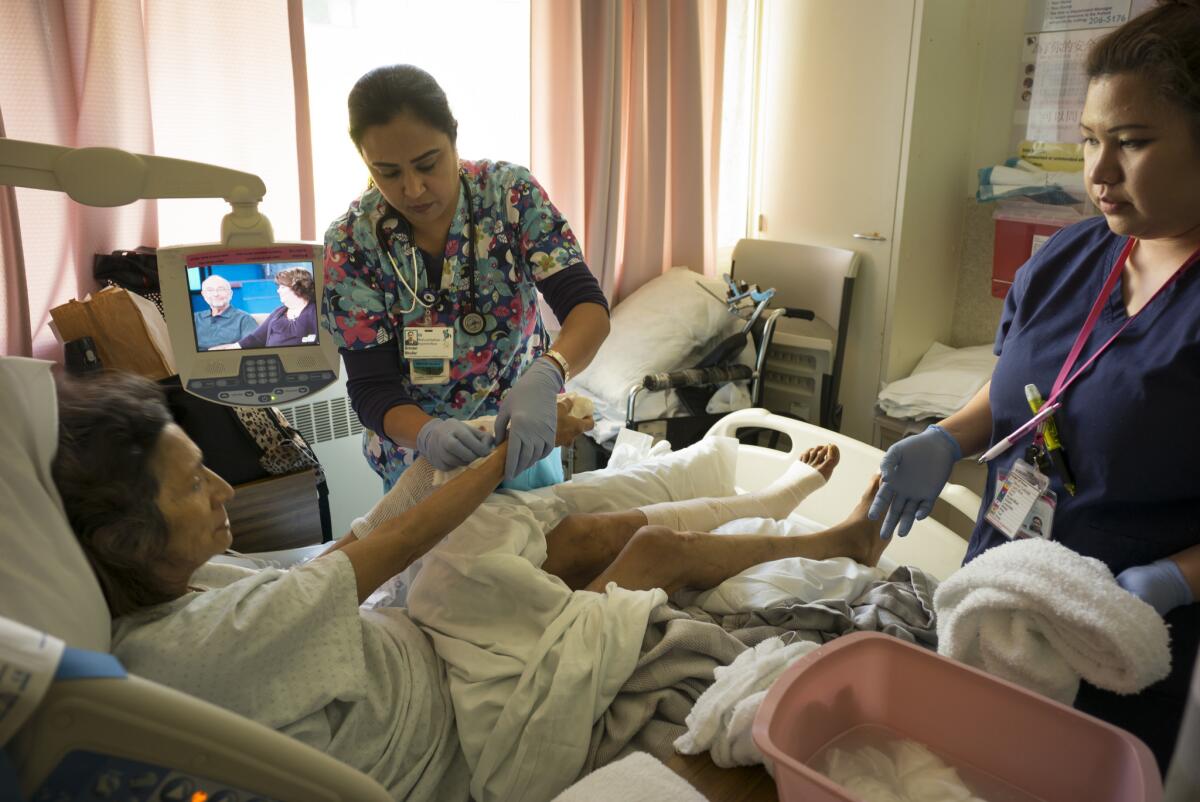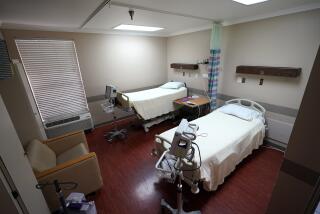Nation’s healthcare changes may rein in costs in long run, report says

- Share via
Reporting from Washington — National healthcare spending will continue to rise in coming years, but at a slower rate than in the previous two decades, according to a government analysis of the nation’s $3-trillion healthcare tab.
The report released Wednesday suggests that changes underway in medical care and insurance coverage may help rein in America’s notoriously high-cost system, even as millions of Americans gain insurance through the federal healthcare law.
But the slowing still may not make healthcare affordable, as medical spending is projected to outpace economic growth over the next decade, the report says.
“Analysis of historic trends tells us that healthcare spending tracks with economic growth, so as the economy is anticipated to improve over the next decade, health spending growth is projected to grow faster,” said the report’s lead author, Andrea Sisko, an economist at the Department of Health and Human Services.
The agency each year analyzes how the country spends money on healthcare. Although the projections are vague, they provide something of an annual report card on the nation’s complex system.
This year’s analysis is mixed.
After years of very slow growth, stemming largely from the recession, healthcare spending is expected to pick up to an average annual rate of 5.7% over the next decade, or 1.1 percentage points higher than overall economic growth.
The spending growth is driven by the recovering economy and by the expansion in insurance coverage that began this year under the Affordable Care Act, according to analysts. The health law allows Americans in most states to get guaranteed coverage through a commercial health plan or through Medicaid. (Some states whose political leaders oppose the law have not expanded their Medicaid programs to cover all their poorest residents, an option under the law.)
The acceleration in spending will push the country’s total healthcare tab to more than $5 trillion in 2023, or about 19.3% of the economy. That is up from 17.6% this year, already far more than that of any other industrialized nation.
Analysts also expect the government’s share of that bill to increase, as more Americans age into Medicare or get subsidized coverage through Medicaid or the new insurance marketplaces created by the health law.
But the authors of the report do not expect healthcare spending to return to its explosive growth of the two decades before the 2008 recession.
Sean Keehan, another government economist who worked on the report, said that rising use of generic drugs, increasing price pressure on hospitals and doctors, and growing popularity of high-deductible health plans that force consumers to pay more out of pocket for their care would restrain spending.
Other experts believe that changes in the way care is delivered are beginning to have an effect as well. Insurance companies are increasingly rewarding medical providers who deliver better-quality, more efficient care rather than simply do more procedures.
And Medicare, the insurer for older Americans, has lower costs than commercial coverage available through an employer.
These are all hopeful signs, said Larry Levitt of the Kaiser Family Foundation, a nonprofit group that analyzes health policy and is not affiliated with healthcare provider Kaiser Permanente.
Like many experts, Levitt said policymakers must work to further slow rising medical costs, which continue to take a larger share of workers’ pay.
“The fact that health spending is expected to grow slowly doesn’t help someone whose paycheck is growing even more slowly,” Levitt said. “Now is not the time to take the foot off the brake.”
noam.levey@latimes.com
More to Read
Sign up for Essential California
The most important California stories and recommendations in your inbox every morning.
You may occasionally receive promotional content from the Los Angeles Times.












